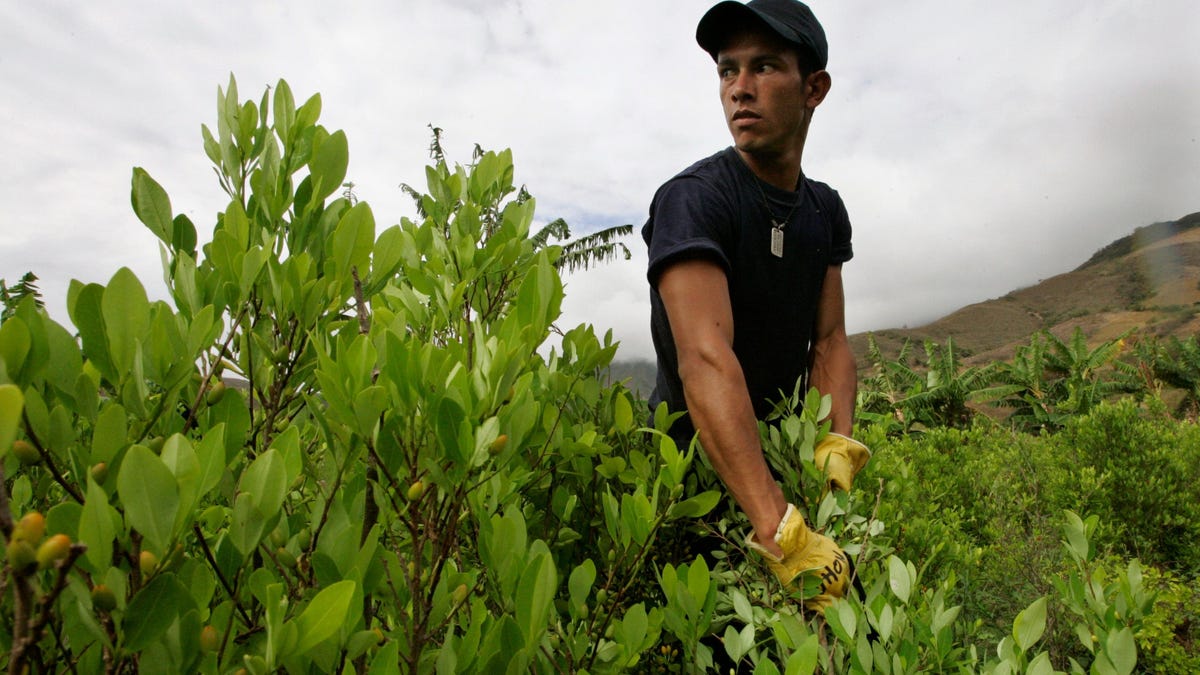The Coca Crisis in Colombia: Record Cocaine Production and the Battle Against Drugs
The coca plants in Colombia continue to flourish, resulting in a surge in cocaine production. According to a recent United Nations report, Colombia, the largest cocaine producer in the world, has set new records for the cultivation of coca leaf and the estimated production of the illegal drug. The statistics reveal an alarming increase in drug-related activities.
The UN estimates that the area of land planted with coca has surpassed 230,000 hectares in 2022, a 13% rise from the previous year. This data is gathered using satellite imagery, field visits, community engagement, and information from the government of Colombia and other organizations.
Interestingly, this boom in coca cultivation comes at a time when the government, led by President Gustavo Petro, has shifted its approach in combating drug production. Unlike his predecessor, Petro has adopted a non-confrontational stance, focusing on incentivizing farmers to transition away from producing cocaine. This includes promoting legal crops such as sugar cane and pineapple, along with animal husbandry, as alternatives to coca farming. To support this transition, cash subsidies are being provided to farmers who participate.
However, early indicators suggest that President Petro’s strategy may not be effective, and it could even be contributing to food insecurity in Colombia. Nevertheless, it is too soon to draw definitive conclusions at this stage.
President Petro recently emphasized the need to view drugs as a health issue rather than a military problem. At the Latin American and Caribbean Conference on Drugs, he stated, “It is time to rebuild hope and not repeat the bloody and ferocious wars, the ill-named ‘war on drugs’, viewing drugs as a military problem and not as a health problem for society.”
Colombia, along with other Latin American countries, concluded in a conference that the main focus should be on reducing the demand for drugs. This can be achieved through public education, addressing inequality, poverty, lack of opportunities, and violence. Attempts to curtail drug supply could potentially fuel illicit activities such as arms trafficking, organized crime, and money laundering, as highlighted by President Petro.
Looking at the statistics related to coca and cocaine in Colombia:
- 65% of the world’s total coca crop is concentrated in the regions of Nariño, Putumayo, and Norte de Santander.
- Putumayo has experienced the largest increase in coca cultivation, with an area of land measuring 20,000 hectares.
- In 2022, cocaine output rose by 24% compared to the previous year, reaching 1,738 metric tons.
- Special management areas account for 49% of coca cultivation, with 19% on the lands of black communities, 15% in forest reserves, 10% in indigenous reservations, and 5% in national natural parks.
- Approximately 200,000 families in Colombia depend on coca cultivation for their livelihood, according to the International Crisis Group.
- Coca plants have a short harvest time, taking only 7 months, compared to 16 months for pineapple and 4 years for coffee. Coca yields 3-4 harvests per year, while coffee yields 2.
- Today, the territory used for coca farming is 5 times larger than during the days of Pablo Escobar and his Medellín cartel in the 1980s. Improved agricultural techniques and more productive strains of coca contribute to higher yields.
In an effort to combat the drug crisis, Colombia previously attempted a shift to alternative crops. However, the implementation of crop substitution programs faced challenges. Government payouts were incomplete and inconsistent, leading many farmers to abandon the legal crops and return to illegal coca planting, particularly in remote areas.
Additionally, President Petro supports the legalization of cannabis in Colombia. Although a bill to legalize marijuana possession for personal use did not pass in the Senate, Petro remains an advocate for cannabis legalization, the release of incarcerated individuals related to marijuana, and the potential export of marijuana to other countries if it becomes legal.
Related Stories
- Anti-corruption presidential candidate in Ecuador shot dead
- Did you know you might unknowingly have traces of cocaine on you?
- Exploring the concept of ethical consumption with fair-trade cocaine and conflict-free opium
Denial of responsibility! Vigour Times is an automatic aggregator of Global media. In each content, the hyperlink to the primary source is specified. All trademarks belong to their rightful owners, and all materials to their authors. For any complaint, please reach us at – [email protected]. We will take necessary action within 24 hours.


